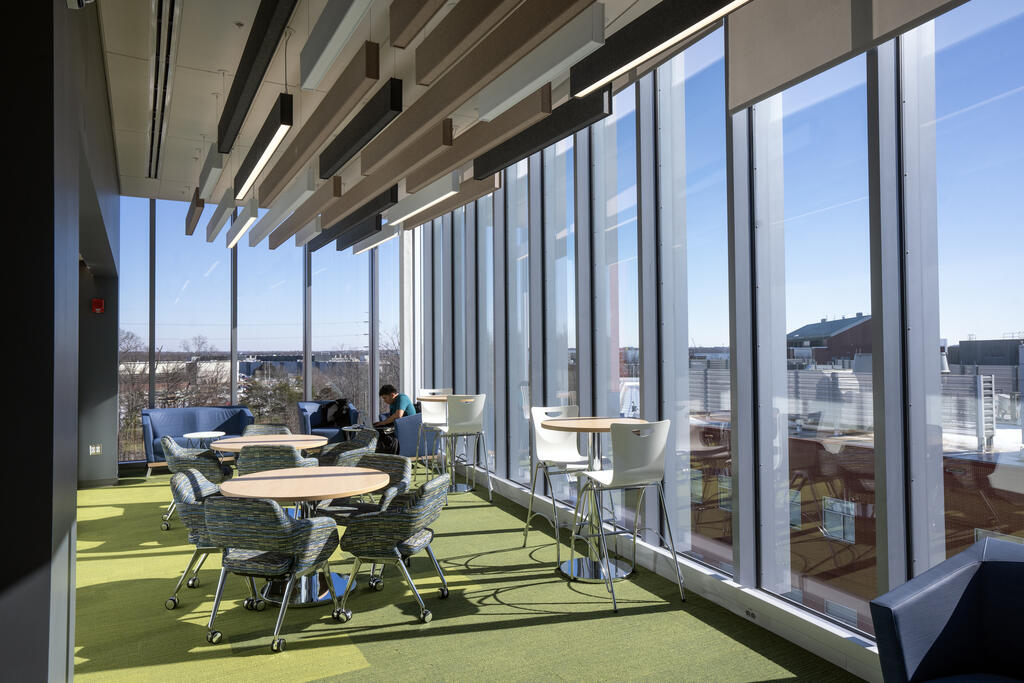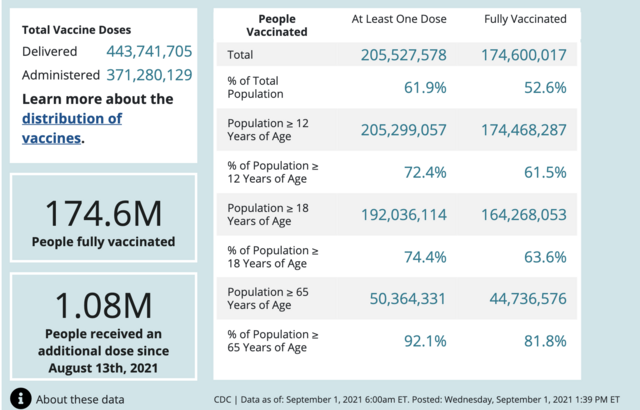Admission CTAs
COVID-19 FDA Vaccine Approval - Mile 18
Over the past year, George Mason University scientists have carried out research on vaccine development in collaboration with four different countries in our BRL3 labs, our researchers have spent countless months developing novel and non-invasive saliva-based antibodies testing; fluid dynamic modelling of airborne virus particulates; in depth data science behind virus sentiment on social media and analysis of people movement and hospital bed availability; and even standing up vaccine distribution and testing sites for our communities.
As Dean of the College of Science, one could say I've had a rather unique and predominantly scientific view of the COVID-19 pandemic race.
George Mason University, the largest public R1 research university in VA and one of northern VA's largest employers, decided to implement a mask mandate in early summer of 2020 for all faculty, staff and students who returned to campus, with additional safety protocols including daily symptom reporting and randomized testing, all for the safety of our community. And for this fall semester, in June 2021, Mason implemented a EUD COVID-19 vaccine mandate for all faculty, staff and students who return to campus, continuing the same social distancing and testing safety protocols, again relying on science to minimize COVID-19 spread within our community. These decisions were scientifically based after thorough monitoring and data analysis.
A significant scientific milestone was reached Monday, August 23 when the Pfizer Covid-19 vaccine, Comirnaty, garnered full FDA approval. According to the FDA press conference, after testing on 40,000+ individuals, rigorous review of virus manufacturing facilities and analysis of symptomatic outcomes, the vaccine was 91% effective in stopping the spread of COVID-19 for those age 12 and older who received it.
But, here's more data...according to the Center for Disease Control, as of August 30, about 38% of Americans have not received at least one COVID-19 vaccine dose and antibody testing still hasn't confirmed long term non transmittal of the virus. With the likelihood of a virus for younger children not emergency mandated until probably early 2022, we still need to pay careful attention to the science around how to control the spread of the virus. See the below CDC chart for details.
As you may know, I enjoy running and have been fortunate to have completed 5 full marathons (granted, when I was in my 20s 😊). According to a marathon runners’ blog, “For most runners, the hardest mile during the marathon is between the 18th and 23rd mile, closer towards the finish line. The precise number will differ between runners depending on their mental toughness and overall stamina.”
The blog further explains, “A marathon is approximately 26 miles in total, so the 18th-23rd mile is a very trying part of the race. At this stage, runners are physically exhausted and mentally exhausted. So, this is where they’ll struggle the most to keep going forward, resulting in a mental struggle that’s equal or more intense than the physical. Between the 18th and 23rd mile is also where runners might experience the infamous – hitting the wall – feeling.” Sound familiar?In my case, I remember very clearly the pain and exhaustion I experienced when I reach the infamous “heartbreak hill” (about 20 miles in) at the Boston Marathon (which I ran in 1990 and 1994). In both occasions, I thought I was not going to make it and that I had to stop. I ended up pulling through and finishing.
Well, I’d say we are at mile 18 in our COVID-19 marathon.
But vaccination is only one part of the equation. We know the other pandemic challenge is stemming the virus spread. Let us not forget what we first learned about the pandemic last year. Now, with this important FDA Covid-19 vaccine approval, the last thing we need to do is hit our personal walls.
As educators across the nation welcome communities back to their campuses and classrooms, there ensues a great debate about how to best gather in a socially distanced manner, and whether individuals should be required to wear a mask. I feel as a scientist who has seen the data and monitored the particulate spread, I should remind you all...we were all isolated in our homes a year ago, not going out to work or dinner, or school. And now, we think we can just go back to life as normal? And regardless of politics, I'll bet if you saw what I've seen, you'd still keep that mask handy as well. We are at the part of the race when we need to rely on our mental toughness and our scientific knowledge.
Much is still to learn about COVID-19 vaccine use for young people, the delta variant and 'long Covid-19' effects. Our researchers are working just as diligently now on these problems as they were when the need for a vaccine and accurate testing was greatest. It's not time to let down our guard for wishful thinking of some sense of normalcy. Or just because you've had your vaccine; let the rest fend for themselves. With pediatric hospital bed demand exceeding supply, our communities, and in particular our children demand better from us. Businesses, organizations and educators should continue to work with scientists to safely assess their venues and potential crowd spread of the virus to develop and implement proper safety precautions. We've come so far. Come on...let’s push through our miles 18-23. Rely on your scientists. It's time to finish this COVID-19 marathon!
FMW


